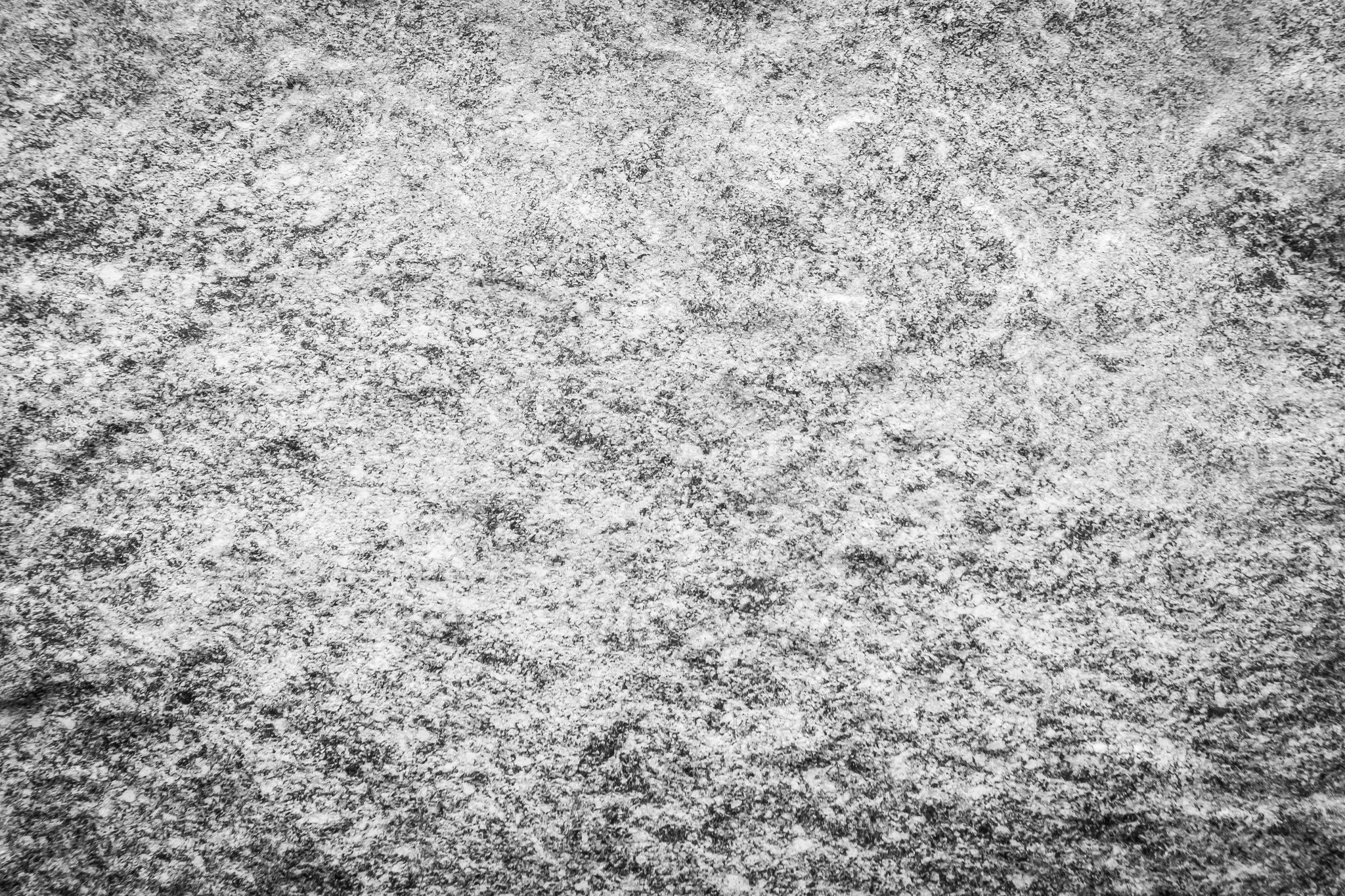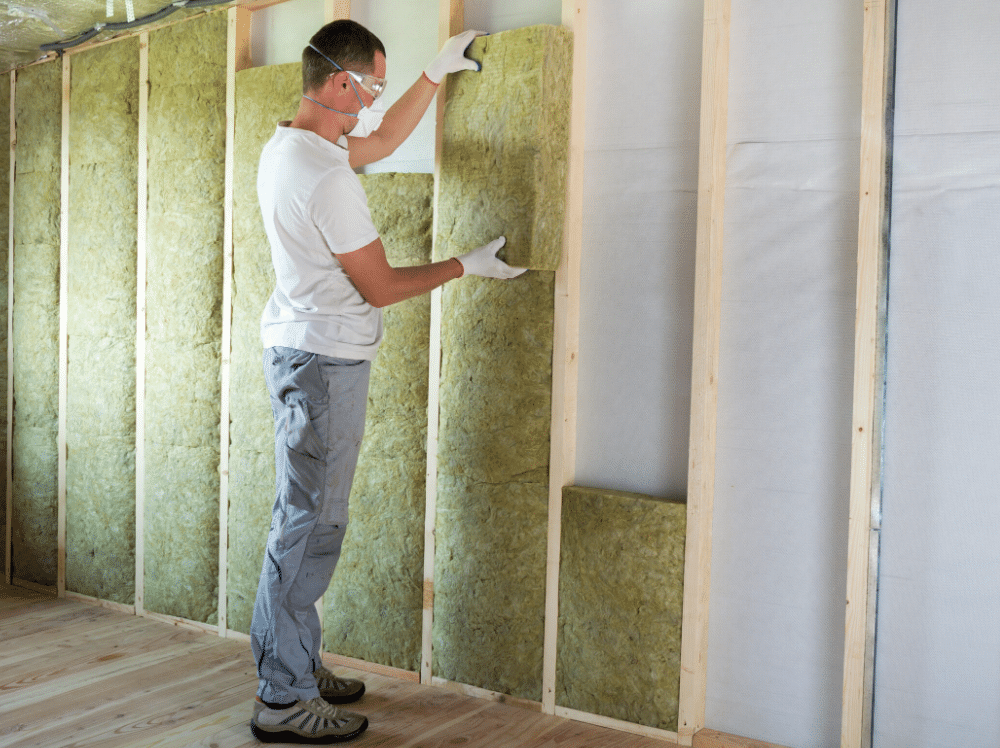Effective Strategies To Get Mold Out Of Carpet
Introduction
Dealing with mold in your carpet is not just about keeping your home looking fresh; it’s a crucial step towards ensuring a healthy living environment. Mold, which thrives in damp and dark conditions, can pose significant health risks, including respiratory issues, allergic reactions, and even infections.
These health hazards make it imperative to address mold growth promptly and effectively. In this guide, we’ll delve into the importance of thorough mold removal from carpets, offering detailed steps and professional advice.
Our focus is on providing you with comprehensive techniques—from DIY remedies to hiring professional carpet cleaning services—to help you eliminate mold and prevent its return.
By understanding and implementing these strategies, you can safeguard your home against the persistent and harmful effects of mold, ensuring a cleaner, healthier space for you and your family.
Understanding Carpet Mold and Its Risks
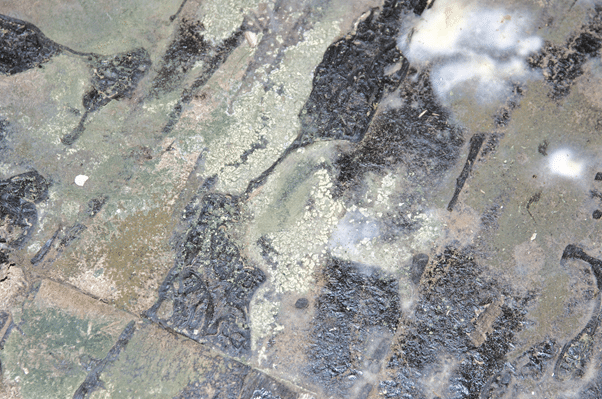
Mold is a type of fungus that thrives in moist, dark environments, making carpets an ideal breeding ground. When mold spores in carpet find suitable conditions—such as after a spill, leak, or prolonged humidity—they start to grow and spread rapidly.
Carpet mold and mildew not only tarnish the appearance of your flooring but also pose serious health risks. Mold exposure can lead to respiratory issues like coughing, wheezing, and asthma, as well as allergic reactions including sneezing, skin rashes, and eye irritation.
Addressing mold promptly is crucial to prevent these health problems and avoid permanent damage to your carpets. Mold can weaken carpet fibres, leading to deterioration and costly replacements. Moreover, mold spores can infiltrate the air, compromising indoor air quality and affecting the overall health of your household.
Understanding the gravity of these risks underscores the need for immediate and effective carpet mold treatment. By taking timely action, you can eliminate mold and mildew in the carpet, protect your health, and extend the life of your flooring.
Common Causes of Mold in Carpets
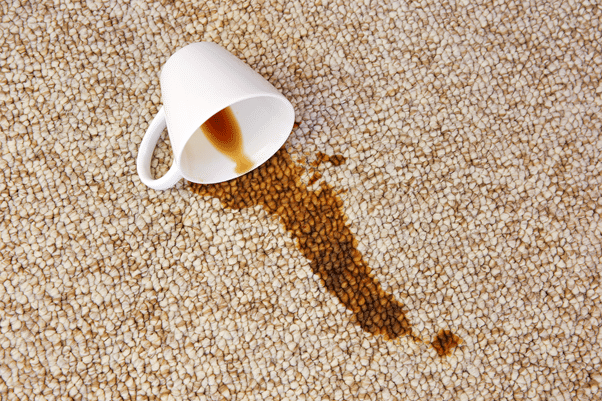
Understanding the causes of mold in carpets is essential for effective prevention and remediation. Here are the main factors that contribute to mold growth:
Moisture from Spills: Accidental spills from beverages or other liquids can seep deep into carpet fibres if not cleaned up immediately, creating a perfect environment for mold.
Leaks: Water leaks from plumbing issues, such as broken pipes or faulty appliances, can lead to significant moisture build-up under and within the carpet, fostering mold growth.
High Humidity: Environments with consistently high humidity levels provide ongoing moisture that carpets absorb, which promotes mold development over time.
Poor Ventilation: Lack of proper airflow in rooms can cause moisture to linger. Poorly ventilated areas trap humidity, allowing mold spores to settle and grow on carpets.
Condensation: In cooler months, condensation from windows can drip onto carpets, particularly if they are placed close to windows. This moisture, if not dried quickly, can encourage mold.
Even minor moisture issues, such as a small spill or slight humidity, can lead to mold if not promptly addressed. The fibres in carpets absorb moisture and hold onto it, creating a persistent damp environment. This not only causes mold but can also lead to unpleasant odours and health risks.
Effective carpet mold remediation involves addressing these causes swiftly and implementing preventive measures, such as improving ventilation and using dehumidifiers, to maintain a dry, mold-free environment.
Signs of Mold Growth in Carpets

Identifying mold in carpets early is crucial to prevent health issues and damage. Here are some key signs to look out for:
Visual Signs: Mold often appears as discoloured patches on the carpet. These spots can be black, green, or white and typically have a fuzzy or slimy texture. Discolouration may start small but can spread if not addressed promptly, indicating a serious mold problem beneath the surface.
Odours: A persistent musty smell is a strong indicator of mold growth. This odour is often more noticeable when the room is closed up for a while or when humidity levels rise. If you detect a musty smell that doesn’t go away after cleaning, mold is likely to be present.
Health Symptoms: Mold exposure can cause various health issues. Common symptoms include sneezing, coughing, nasal congestion, and itchy or watery eyes. People with allergies or respiratory conditions, like asthma, might experience more severe reactions. If these symptoms worsen when you’re at home, it could be due to mold in your carpets.
Guide to Removing Mold from Carpet
Safety Precautions
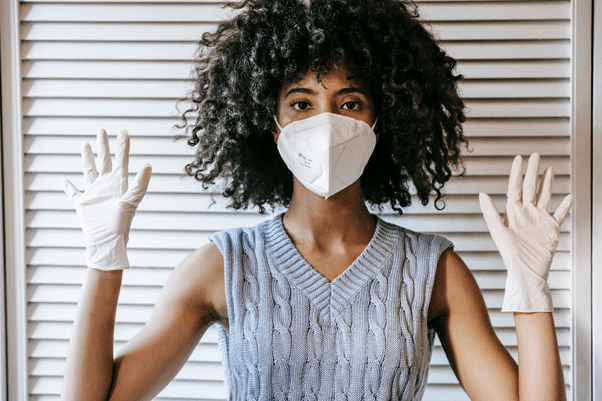
Before you start removing mold from your carpet, it’s essential to prioritise safety. Mold spores can cause serious health issues, so wearing protective gear is a must. Always wear gloves and a mask to avoid direct contact with the mold and to prevent inhaling harmful spores.
Ensure the area is well-ventilated by opening windows and using fans to circulate air. Wearing long sleeves and protective clothing will further reduce the risk of skin contact with mold spores. By taking these precautions, you can carry out safe mold removal from carpets and protect your health during the process.
DIY Methods for Mold Removal
Using Vinegar and Baking Soda
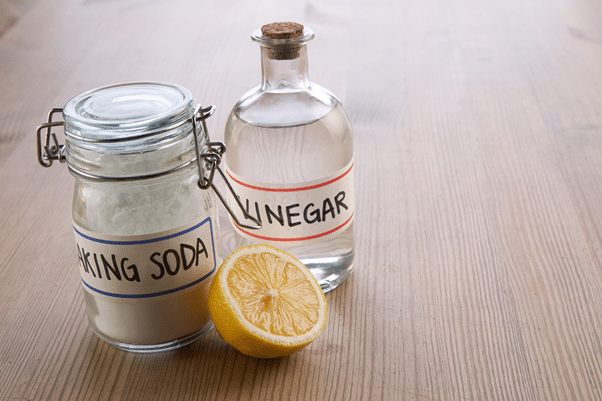
One of the most effective and non-toxic methods for removing mold from carpet involves using vinegar and baking soda. Here’s a step-by-step guide:
Mixing the Solution: Combine equal parts white vinegar and water in a spray bottle. For added effectiveness, you can add a few drops of essential oil, such as tea tree oil, known for its antifungal properties.
Applying: Generously spray the vinegar solution onto the moldy area of the carpet. Ensure the area is thoroughly saturated.
Scrubbing: Allow the solution to sit for about an hour. Then, using a stiff brush, scrub the affected area to loosen the mold from the carpet fibres.
Drying: Sprinkle baking soda over the treated area and let it sit overnight to absorb moisture and any remaining odours. The next day, vacuum up the baking soda thoroughly.
Using Hydrogen Peroxide
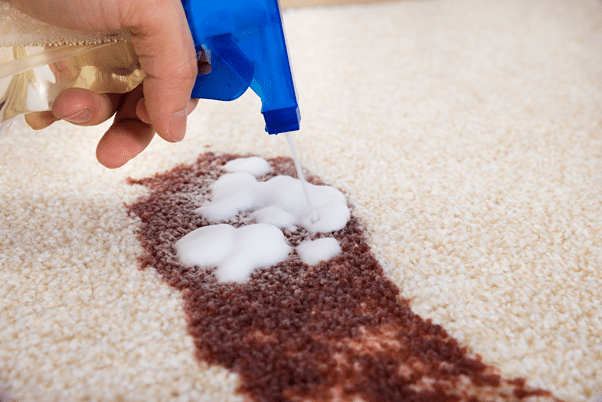
Hydrogen peroxide is another powerful agent for mold removal. Here’s how to use it safely:
Preparation: Use a 3% hydrogen peroxide solution, which is safe for household use. Transfer the solution to a spray bottle.
Application: Spray the hydrogen peroxide directly onto the moldy area. Be cautious with coloured carpets, as hydrogen peroxide can have a bleaching effect. Test on a small, hidden area first.
Wait and Scrub: Let the solution sit for 10-15 minutes. This time allows the peroxide to penetrate and kill the mold. After waiting, scrub the area with a brush.
Drying: Use a clean, dry towel to blot up excess moisture. Ensure the carpet is thoroughly dried to prevent further mold growth.
Using Tea Tree Oil

Tea tree oil is renowned for its natural antifungal properties, making it an excellent choice for mold removal. Here’s how to use it:
Mixing: Add one teaspoon of tea tree oil to one cup of water in a spray bottle. Shake well to mix.
Application: Spray the solution onto the moldy carpet area. Tea tree oil is potent, so a small amount goes a long way.
Let it Sit: Allow the solution to sit and work its magic for at least an hour. There’s no need to rinse; the solution will continue to combat mold.
Drying: Ensure the area is well-ventilated and allow it to dry naturally.
Steam Cleaning
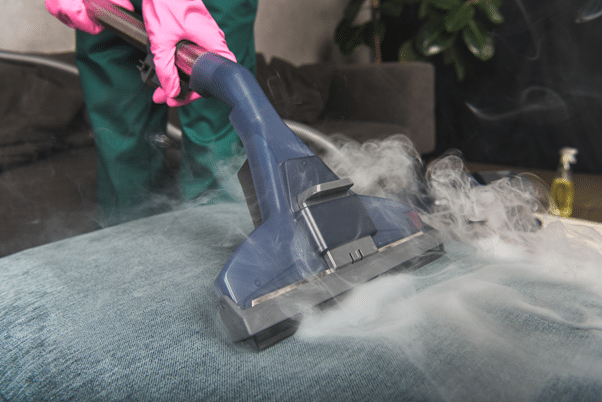
Steam cleaning is an effective method for deep cleaning mold from carpets, using high temperatures to kill mold spores and remove dirt. This technique not only penetrates deep into the carpet fibres but also sanitises the area, ensuring a thorough carpet mold decontamination. One of the significant advantages of steam cleaning is that it doesn’t require harsh chemicals, making it an eco-friendly option. Here’s how to do it:
- Preparation: Start by vacuuming the carpet to remove loose debris and dirt.
- Set Up the Steam Cleaner: Fill the steam cleaner’s tank with water as per the manufacturer’s instructions and allow it to heat up.
- Steam Cleaning: Move the steam cleaner slowly over the moldy areas, ensuring the steam penetrates deeply.
- Drying: Use fans or a dehumidifier to dry the carpet completely, preventing mold from returning.
By following these steps, you can achieve effective deep cleaning and sanitisation, making your home healthier and mold-free.
Professional Carpet Cleaning Services
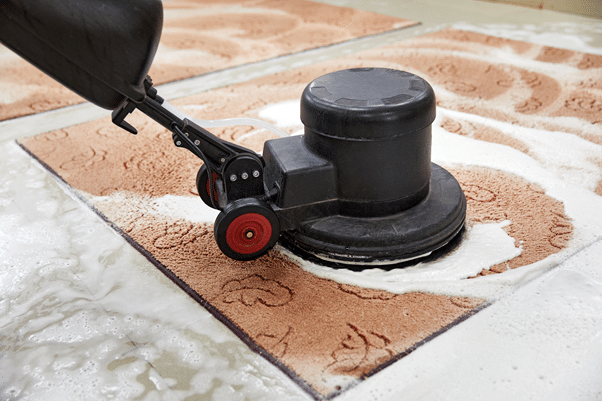
There are situations where professional carpet cleaning for mold becomes essential. If the mold infestation is extensive, keeps recurring, or poses serious health risks, it’s time to call in the experts. Professional cleaning services offer advanced techniques and equipment that ensure comprehensive carpet mold elimination.
They can assess the severity of the problem, provide targeted treatments, and ensure your carpet is thoroughly cleaned and sanitised. The benefits include saving time, ensuring safety, and achieving a level of cleanliness that DIY methods often cannot match. Opting for professional services ensures peace of mind and a healthier living environment.
Preventive Measures to Avoid Mold Growth in Carpets
Regular Cleaning and Maintenance
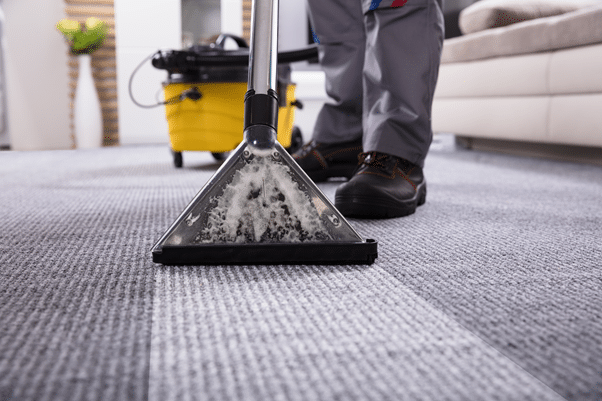
Regular vacuuming is essential for preventing mold in carpets as it removes dirt and debris that can trap moisture. Promptly managing spills and stains is crucial, as even minor moisture left untreated can lead to mold growth.
Periodic deep cleaning, such as steam cleaning, not only maintains carpet hygiene but also eliminates any mold spores that may have settled deep within the fibres. Consistent cleaning practices are a fundamental step in carpet cleaning for mold prevention, ensuring your home remains safe and healthy.
Controlling Humidity and Moisture

Maintaining low humidity levels in your home is vital to prevent mold growth. Use dehumidifiers to keep indoor humidity below 60%, which helps to inhibit mold development. Ensure proper ventilation by using exhaust fans in kitchens and bathrooms and keeping windows open when possible to promote air circulation.
Installing moisture barriers, especially in basements and other damp areas, can further protect your carpets from excessive moisture. Effective humidity control is a key strategy for mold prevention in carpets, ensuring a dry and mold-free environment.
Choosing Mold-Resistant Materials
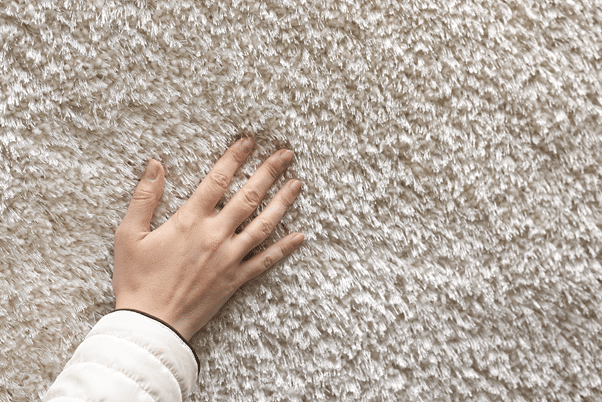
Opting for mold-resistant carpet padding and materials can significantly reduce the risk of mold growth. These materials are designed to resist moisture and are treated with anti-microbial agents that prevent mold and mildew formation.
Selecting carpets made from synthetic fibres, which are less absorbent than natural fibres, can also help in carpet mold prevention. By choosing mold-resistant materials, you add an extra layer of protection to your home, ensuring your carpets remain mold-free and durable.
Ensuring Proper Carpet Installation
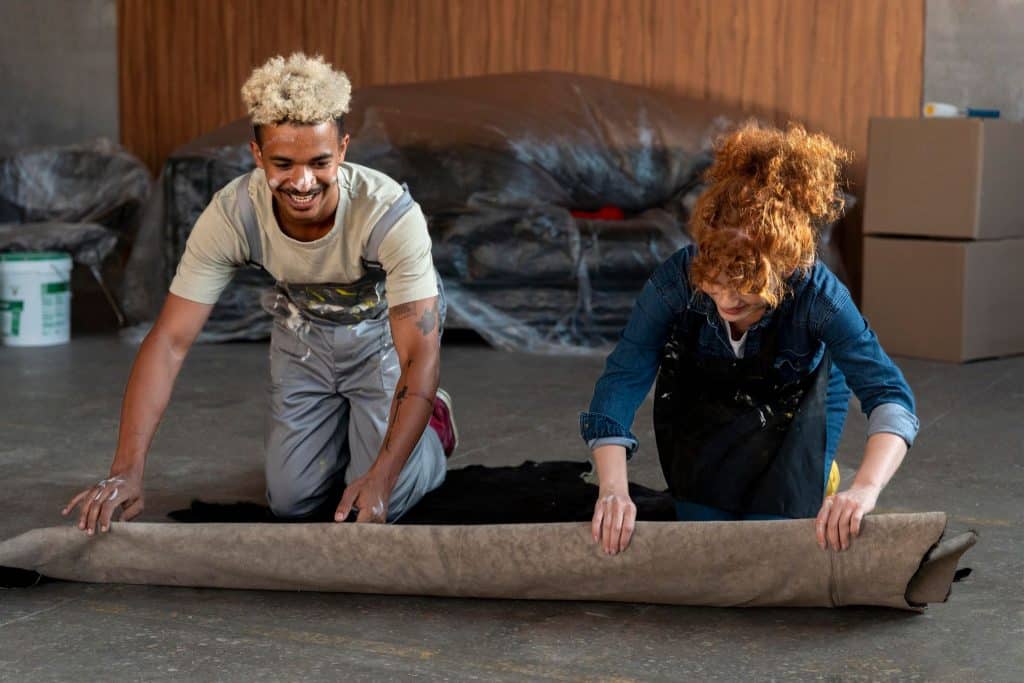
Proper installation of carpets is crucial in preventing mold growth. Ensure that carpets are installed with adequate padding and that seams are sealed correctly to prevent moisture from seeping underneath. Properly installed carpets are less likely to trap moisture, reducing the risk of mold. Regularly check the edges and corners of the carpet for any signs of wear and tear that could expose them to moisture.
Regular Inspections and Immediate Repairs
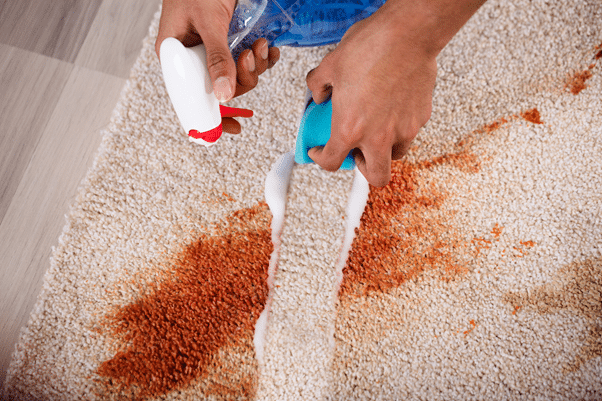
Conducting regular inspections of your carpets and the areas surrounding them can help you catch potential mold issues early. Look for signs of moisture, leaks, or damage and address them immediately. If you spot any areas of concern, such as water stains or a persistent musty smell, take prompt action to repair the source of moisture. Immediate repairs and proactive inspections are essential in maintaining a mold-free home environment.
Conclusion
Addressing mold in carpets promptly is crucial for maintaining a healthy home environment. Mold not only damages the appearance and integrity of your carpets but also poses significant health risks, including respiratory issues and allergic reactions.
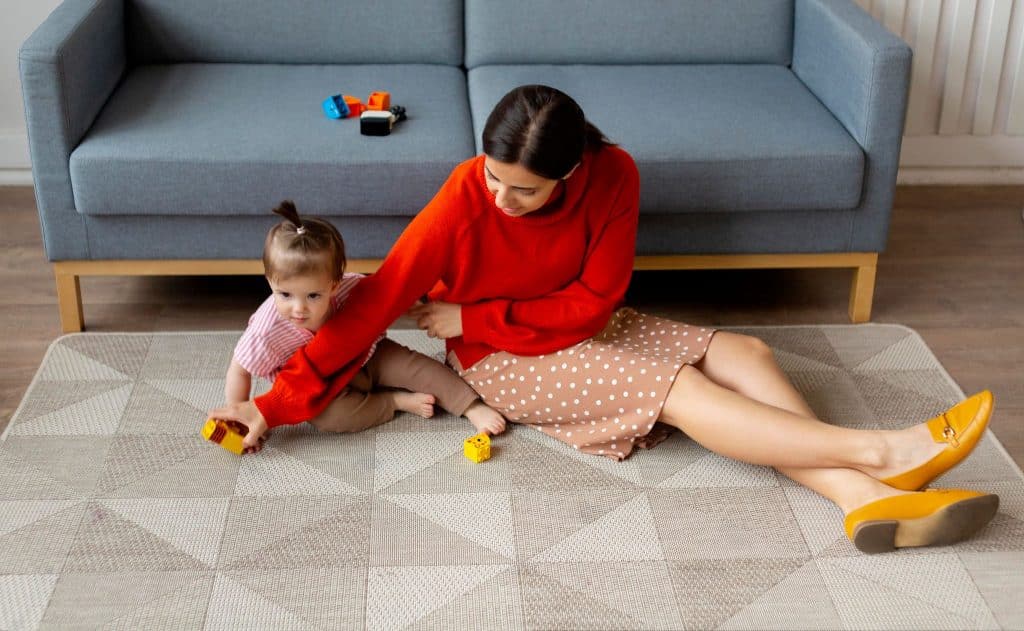
Throughout this guide, we’ve discussed various methods on how to remove mold from carpet, including DIY approaches such as using vinegar and baking soda, hydrogen peroxide, and tea tree oil, as well as the benefits of steam cleaning and professional carpet cleaning services.
Each method provides effective solutions for deep cleaning mold from carpets and ensuring thorough carpet mold decontamination.
By implementing regular cleaning and maintenance routines, controlling humidity and moisture levels, choosing mold-resistant materials, ensuring proper carpet installation, and conducting regular inspections, you can effectively prevent mold growth.
Maintaining a mold-free home environment not only enhances the longevity and appearance of your carpets but also promotes better health and well-being for you and your family.

